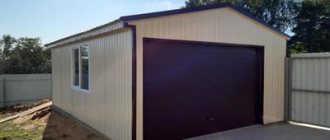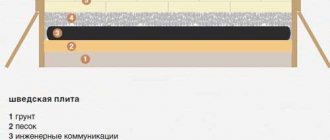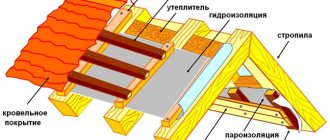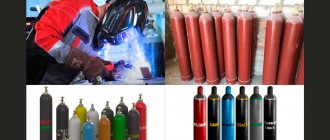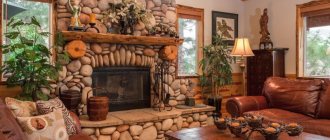Modern fireplaces act not only as a decorative part of the interior. Due to their versatility, they can be a full-fledged source of heat if there is no centralized coolant supply or the main boiler in the house has stopped functioning. Such a device, if installed correctly and correctly, is suitable for heating hot water. But before a home owner can enjoy a fireplace in the living room, it needs to be selected and installed correctly. Which fireplace is best to buy for heating a country house? What is the best way to install it and where? Today ordinary people, who want to see the above structure in their home, are increasingly turning to specialists with similar questions.
Classification of fireplaces
Fireplace placement options.
For an ordinary person who does not have the education of a builder-designer, the variety can be confusing. Without having the necessary information regarding the classification and species diversity of a given heating element, it is very difficult to make a choice.
A fireplace for heating a country house can be of the following types:
- by installation method: wall-mounted, built-in, island;
- by type of fuel used: wood, gas, electric, bio fireplaces, fireplace stoves;
- by type of fuel combustion chamber: open and closed type.
In addition to the devices described above, in modern houses you can find a fireplace for heating two floors. Similar designs are used to create two circuits for heating a room and servicing hot water supply. They are characterized by efficiency and at the same time high cost. Not everyone can build such a structure with high quality on their own, without the proper education and skills, since they are complex in execution.
Realities make it possible to modernize stove heating in a wooden house and insert water circuit heat exchangers into them.
How can an electric stove for heating a home replace a classic one? The answer is here.
Simulated flame
Anyone can create a decorative fireplace, but creating a fire is a difficult task. Special electrical appliances are characterized by high cost, but they will imitate burning wood, accompanying the process with the sound of crackling.
Some people depict the flames as in Pinocchio. This method is a simple decorative design depicting burning firewood. Choose small pictures and place them on the back surface of the firebox.
You can use it as an imitation of a light bulb flame or a New Year's garland. A plasterboard fireplace with a garland wrapped around real logs looks great. A mirrored firebox with candles will help create a beautiful and cozy atmosphere.
Installing a small table lamp in the fireplace niche is also an original idea. Cover the firebox with yellow translucent film and you will achieve a great effect. For this option, you should consider the option of masking the wire, because the light bulb must be turned on and off.
If you don't have room in your fireplace to mount items, you can place treated logs with pretty candlesticks right in front of the fireplace.
How to heat a two-story house?
The owner of a private two-story cottage wants to heat the entire building using a fireplace or stove. There are two possible scenarios here:
- with one firebox, while the second floor is heated by circulating thermal air from the chimney;
- with two fireboxes independent of each other.
Fireplaces with two fireboxes and one chimney are lighter in weight, have a simplified design, and therefore are increasingly being built in houses with their own hands. However, this option for heating a house has a significant drawback: two fireboxes cannot function simultaneously, since the draft will be present at one source, while combustion products from the other will enter the room. The optimal fireplace for heating two floors should have two fireboxes and two independent chimneys, allowing each fireplace to be used separately.
How to make a fireplace for heating a house on two floors with your own hands? In this case, you need to familiarize yourself with the diagram-drawing of brick laying for the fireplace from professionals.
Construction of a fireplace for a two-story house.
This design is a two-tier stove with two independent fireplaces, separated from each other by a lintel. On the ground floor, the firebox is surrounded by two air ducts. They improve heat exchange between the heating element and the room. On the second floor there is only one such air duct, while the second is the chimney from the first firebox.
Fireplaces for two-story buildings are heavy, which requires the construction of a separate foundation for the structure. This must be a reinforced, reinforced concrete structure, which is laid below the freezing level of the soil. The following video will help you properly organize stove heating in a two-story house:
Masonry
A foam concrete slab with a base height of no more than 10 cm is laid on the floor using glue. Vertical blocks for the sides are installed; for a wider structure, foam blocks should be laid horizontally. The block is easy to saw, so it can be sawed into bricks, you will get an imitation of brickwork, the parts can be fastened with the same glue, or a mixture of sand and cement. After installing the side walls, a block slab is glued on top, which will serve as the top shelf, the frame structure is ready. If the space for the firebox is too large, then the front part is cut out of a plywood sheet, also a window to fit the size of your firebox, the vault can be made into an arch or simply flat. Tile sheets, like blocks, are also seated with glue; for the front panel, you can use corrugation, coat it well with glue and apply putty, coat the entire surface with it, especially the seams and joints. Using a spatula, the composition is placed on the trowel and then a layer of putty is applied from bottom to top, leave the first applied layer until completely dry, the next layer will be the finishing layer. When the work is dry, go over it with sandpaper and you can decorate.
Energy efficient fireplaces
If we compare classic fireplaces with open fireboxes and energy-efficient designs, the efficiency of the former is 10-15%, while the efficiency of the latter can reach 80%.
Long burning fireplaces. Long-burning heating fireplaces are a type of energy-efficient equipment. In this case, we are talking about a heating element, where fuel (coal or wood) does not burn, but smolders. As a result of the process, gas is formed, the combustion of which leads to an increase in the air temperature of the room where the device is located, or the heating circuit built inside the device.
Design and principle of operation of long-burning fireplaces. This heating element is a complex structure, which has the following schematic structure:
- fuel bunker. It is common in pellet models. However, today you can find
Long burning fireplace.fireplaces that can independently load ordinary firewood into the firebox;
- the firebox must be closed;
- air duct equipped with a fan. It looks like a telescopic pipe that lowers as the fuel burns;
- chimney and chimney - a system through which combustion products leave the firebox area;
- condensate collector;
- Ash pan – designed to collect solid residues of burnt fuel.
A good efficiency indicator (75-80%) and the effectiveness of the above-described device are achieved thanks to the special movement of fire along the fuel stack. So, here the flame descends along the stack of firewood, and does not rise, as it happens, according to the classical scheme. The air needed to oxidize the wood is supplied not through an opening near the ash pan, but through a fan at the bottom of the submersible air duct.
The firewood is placed and ignited, the firebox is closed and the ventilation hole in the air duct is opened. The oxygen necessary for combustion is supplied only to the upper layers of the fuel, while the lower layers remain unused. As the wood burns, the telescopic duct pipe with a fan at the end gradually lowers, and the flame consumes more and more layers of wood. As a result, the fuel burns completely with minimal ash formation. The gas formed as a result of smoldering firewood is completely oxidized to form ordinary water and carbon dioxide.
Connection diagram for a fireplace with a water jacket to a gas boiler.
Long-burning heating fireplaces have the following advantages:
- high efficiency 75-80%;
- long burning time of one fuel load;
- it seems possible to regulate the intensity of the fuel oxidation reaction;
- the fireplace can be connected to the main heating circuit of the house or equipped with air ducts.
Flaws:
- low chimney temperature leads to the formation of condensation;
- The design is difficult to construct independently.
Heating fireplaces for a long-burning home are an excellent source of heat for a summer residence where there is no main heating circuit and there is no need for constant heating of the room. This type of heating elements functions perfectly when combined with a conventional heating boiler. The first type of device acts as an additional source of heat. Many consumers ask which fireplace is best for heating? In this matter, only pellet fireplaces, where indirect combustion of fuel occurs, that is, gas generation, can compete with long-burning devices.
Pellet fireplaces with water circuit. Pellet fireplaces with a water jacket are in many ways similar to the design of a solid fuel boiler. However, a significant advantage of the first version of the heating element is its aesthetic appearance. Fireplaces have always been part of the interior and today are an integral part of the design composition. Fireplaces, unlike boilers, can be installed in the living room, rather than creating a separate boiler room for them.
What is a fireplace with a water circuit? This is a fireplace-boiler for heating a house, which can be installed directly into the heating circuit of the house's thermal distribution or can be used to service the DHW circuit.
Pellet fireplace boiler.
The equipment consists of a combustion chamber into which fuel (pellets) is continuously supplied through a screw. A burner is located in the firebox, where direct oxidation of the energy carrier occurs. Air supply is carried out via a built-in fan. The combustion products are removed through chimney systems. The fireplace body is made of durable sheet steel, which is lined with brick. Above the flow chamber there is a storage tank where a certain supply of coolant is stored. The tank is connected to pipes for distributing the heating system of the house. In some cases, the fireplace is equipped with a heat exchanger.
Principle of operation. A fireplace-boiler for heating a house using pellets is operated in the same way as a conventional, similar device. In the firebox, a normal combustion reaction occurs on the burner until the temperature in the fireplace rises to the desired level (average 200°C). Further, the supply of oxygen to the firebox decreases and the pellets begin to smolder. As a result, gas is released, the combustion of which releases several times more energy than during conventional combustion.
A wood stove has been used for heating a home for many centuries to this day.
Read here what benefits a country house with stove heating offers.
What materials should be used?
Requirements for materials for equipping the furnace:
- the combustion chamber must be built from heat-resistant fireclay bricks;
- for the construction of the heating device body, you can choose ordinary red brick;
- the construction of the stove must take place using a special heat-resistant mortar. You can use a ready-made dry mixture or prepare it yourself using low-fat clay. Fire chamber made of fireclay bricks
[ads-mob-1][ads-pc-1]
Difficulties in installing a fireplace in a wooden house
Fireplaces and home heating circuit
Modern fireplaces are notable for the fact that they can be installed directly into the circuit of an existing heating system at home, if the fireplace is equipped with a water jacket. There are options with air ducts. In this case, heat from the heating element is transferred to the room without the participation of an intermediary, that is, a coolant, but through an air duct system. The latter are mounted to special holes in the fireplace masonry. However, in practice it is the water heating circuit that has proven its effectiveness.
How to make heating from a fireplace correctly? Everyone asks this question. Experts answer the following: only an open-type heating system can come from the fireplace, that is, one that has an open expansion tank in case the coolant in the system overheats and prevents water hammer. If the fireplace is connected to a closed type system, then the presence of a cooling circuit is required.
Connection diagram for a fireplace with a water jacket to an open heating system.
Open system and fireplace. How to connect a fireplace to an open heating system? In this case, the fireplace piping passes through a built-in coil and heat exchanger. The latter are located directly in the upper part of the firebox, in the walls of the fireplace. The heating system is equipped with an expansion tank and, if desired, a circulation pump. The pipes go throughout the house to the radiators. In such a system, the main heating element is the fireplace. There is no parallel connection to the boiler here. Also, this wiring is not intended for preparing hot water.
Closed heating system and fireplace. This type of piping does not require an expansion tank. To protect the system from water hammer, in the event of uncontrolled heating of the coolant from the fireplace to a critical temperature, either an intermediate heat exchanger is used or a cooling circuit is organized. In the first case, the coolant in the heating system does not come into direct contact with the water jacket of the fireplace. In the second, cold water can be mixed into the heating circuit coolant.
The advantages of such a piping are that fireplaces are used here to heat several rooms, to prepare hot water (through an indirect heating boiler), and it is also possible to piping together with a heating boiler. It will work if the temperature of the coolant from the fireplace drops to the minimum, lower limit.
From boxes
It’s easy to make a portal from boxes yourself. For these purposes you will need cardboard, a knife, a ruler, a simple pencil, scissors, a stapler and construction tape. To create a stable structure, it is better to choose a box from under household appliances.
Draw a sketch of the future portal and transfer the image to the box. Trim the excess from the box and secure the fireplace using a staple gun. All joints of the box are sealed with construction tape. The firebox is cut out using a knife. You can only cut out the top and side of the firebox. Fold the material deep into the box to create a shelf. It should also be secured with construction tape.
Now you can attach the structure to the wall. You will need double sided tape for construction. Use wallpaper to cover the portal. If you don’t want to spend a lot of time, you can simply purchase a self-adhesive film with a brick pattern. The top of the fireplace is decorated with a cardboard shelf or foam parts.
Fireplace - advantages, features, installation
A fireplace as the main heating helps save money on energy, since wood and wood-based products are the most inexpensive fuel today. Fireplaces are used to heat one- and two-story buildings, for cooking food and hot water. The modern market offers customers fireplaces of various types, designs and operating principles.
However, energy-efficient installations are popular among consumers - these are pellet fireplaces and long-burning heating elements. Connecting the fireplace to heating will increase the efficiency of the equipment. This can be an open or closed heating system. Today it is possible to connect a fireplace and a boiler in parallel.
Setting up the foundation
Construction of a furnace with your own hands begins with the construction of a foundation pit. It should have dimensions that exceed the dimensions of the housing by 5-10 cm. The depth of the pit is 60-70 cm, depending on the size of the heating device.
Foundation for a fireplace in a wooden house
Lay broken stone, brick or crushed stone to the entire depth of the pit. Fill the prepared base with sand-cement mortar in a ratio of 1:3. The foundation, which is made with your own hands, must last 28 days, after which you can begin laying the body. The floor should be 6 cm higher than the base.
Recommendations from professionals
To build a high-quality fireplace for heating rooms, you need to take into account certain features. The fire source must be installed in such a way as to minimize the likely risk of fire. There should be no flammable objects nearby; a fire extinguisher must be installed near the fireplace.
The following expert advice will help you build a fireplace correctly:
- The wall near the combustion chamber must be fireproof. Moreover, an additional layer of thermal insulation made of aluminum foil or other metal alloys is laid.
- The floor near the fireplace should be covered with non-combustible materials - metal, porcelain stoneware or stone. This will prevent fire caused by falling sparks.
- To protect the ceiling from elevated temperatures, partitions made of metal lathing and plasterboard are used.
- For the installation of a smoke exhaust duct, it is recommended to use a two-layer material.
A fireplace cannot always heat a building completely, since the bulk of the thermal energy is lost through the chimney. In this case, the best design may be a fireplace stove, which makes it possible not only to heat the house, but also to cook food. To heat the house, you can connect a water heating circuit.
Read more: fireplace stove for long burning.
Rules for arranging the fireplace area
The area in front of the firebox is made of fire-resistant stone.
The floor near the fireplace must be made of non-combustible materials. It can be faced with ceramic tiles and natural stone. The floor can also be covered with a metal sheet.
If the combustion chamber is not equipped with a glass door, additionally install a decorative metal grate for the fireplace.
Do not place furnishings that may ignite on the floor close to the heater. It is best to place them at a distance of 1 m from the combustion chamber.
A brick fireplace built in a wooden house, if all installation rules are followed, will be an excellent option for arranging a heating system for heating residential premises.
[ads-pc-2][ads-mob-2]
Protecting wood from overheating
As already noted, it is extremely important to protect the wooden parts of the house that are in close proximity to the fireplace from overheating. Otherwise, fire cannot be avoided. In addition to the load-bearing floor beams, the wall behind the outer layer of facing material also needs protection. To do this, a so-called fire wall is constructed from brick. Its height should correspond to the height of the fireplace.
Such a wall can also be built from foam concrete blocks or gypsum . A protective gasket is also needed between the firebox and the facing slabs. Heat-resistant basalt wool is suitable for this. We also make a 30-centimeter collar on the floor around the fireplace from heat-resistant materials.
